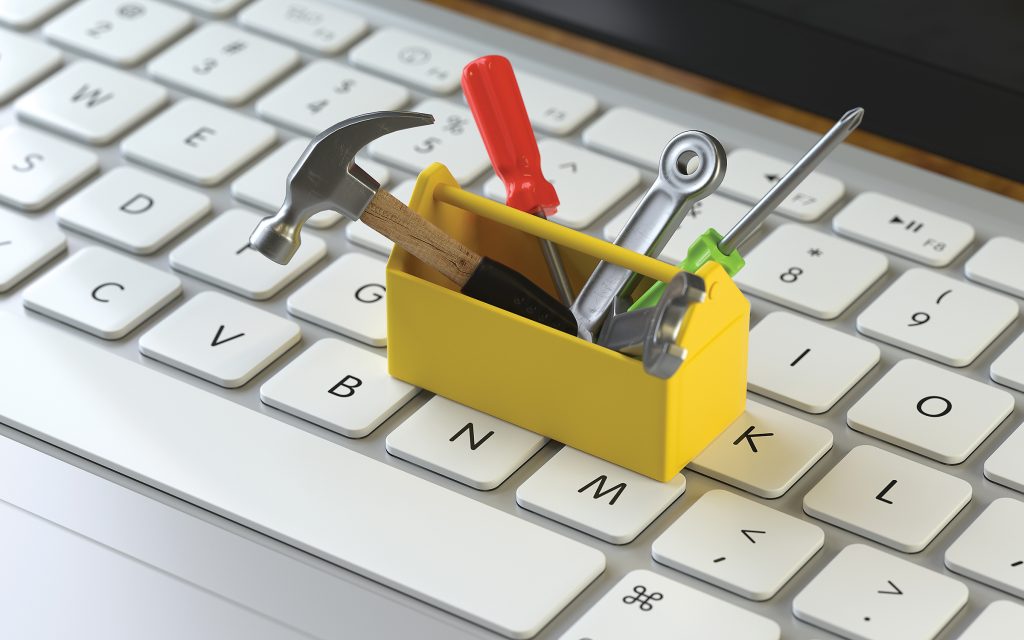
CMMS implementation and common mistakes to avoid
Implementing a CMMS is a considerable investment in time and money for a business. Yet, opportunities are squandered if it’s approached simply as a digitization of existing programs.
March 7, 2022 | By Bryan Christiansen
 Photo: abluecup / iStock / Getty Images Plus
Photo: abluecup / iStock / Getty Images Plus 
Photo: abluecup / iStock / Getty Images Plus
With the advance of new technologies, a new computerized maintenance management system (CMMS) is a transformational event for a plant, offering efficient asset utilization and greater reliability. Therefore, it demands a complete review of the existing maintenance process and operational culture. Of the many pitfalls possible with CMMS implementation, four mistakes occur most commonly.
1. Incorporating existing maintenance flaws
Maintenance systems require continuous improvement and evolution, yet inefficiencies and redundancies can accumulate over time. Inputting an imperfect maintenance program to a CMMS creates an abstraction that obfuscates, giving the appearance of control but with sub-optimal gains. Before implementation, a maintenance program review should be done at a strategic, tactical, and operational level, as part of the CMMS investment.
Strategically, the operation’s maintenance objectives should be analyzed considering the new opportunities coming with the technology. The original premise behind plant reliability, capital intensity, and maintenance expectation should bear scrutiny by a senior team. The future needs for infrastructure changes, to permit system scale and adaptation, should be acknowledged.
Tactically, an audit of assumptions regarding failure modes and criticality analysis should be made. Due to new plant introductions and revised layouts, the outcomes of the original criticality and failure effects may be sub-optimal. Similarly, the business may require new processes, including scrapping or modifying existing ones to suit the new paradigm.
Operationally, maintenance managers should review planned maintenance tasks for duplication, obsolescence, detail and effectiveness. It’s also important to understand whether work-hour estimates are accurate. A full spares inventory should occur, and a cleansing of supplier registers should ensure currency and completeness.
2. Neglecting workplace communication
CMMS implementation is a fundamental change for maintenance departments, but it also affects the people and processes in production, warehousing and finance. Neglecting to implement a formal change management process threatens the integrity and effectiveness of the rollout. The cooperation and support of all departments are crucial for a trouble-free integration and the success of an optimized solution. Frequent and meaningful communication is the key, backed by a willingness to hear and respond to concerns and any proposed changes.
It’s important to communicate with dedicated representatives from affected departments and explain to them the benefits of CMMS. If people fail to understand the strategic necessity of the implementation or see a threat from the change, they won’t support the process refinement and data integrity initiative.
Rolling out a comprehensive training program creates familiarity with the new system. Important factors are announced, and any staff concerns, and necessary process modifications are addressed. Technicians and operators should see the change without mundane tasks and have more time for more impactful and interesting roles.
3. Not considering inventory optimization
Often, the focus of CMMS implementation is on planned maintenance tasks and scheduling. Yet, inventory and warehousing departments offer opportunities to unlock capital, streamline operations, and improve equipment availability. The inventory feature of a modern CMMS allows optimized inventory and restocking levels with improved spare parts and tooling availability.
A clear understanding of component mean-time-between-failure and mean-time-to-repair allows inventory adjustments. Inventory optimization frees up lazy capital while identifying supplier performance issues, component reliability, and trends in plant failure.
Operationally, as the CMMS schedules maintenance, the store department can pre-prepare servicing and spare-part kits to support the planned maintenance tasks. They can also ensure specialized equipment and tooling calibration to provide availability on maintenance days. These tasks enable maintenance technicians to focus on their role by readying the resources needed for each PM task. Improving the technicians’ effectiveness reduces maintenance shut duration, directly impacting equipment availability.
4. Failure to future-proof
The pace of industrial change is accelerating as technology advances. Many articles today speak of Industry 4.0 as something new, yet, we’re over halfway through Industry 4.0, with Industry 5.0 emerging on the horizon. The current discussion is what Industry 6.0 looks like.
Businesses in asset-intensive industries face a decline in competitiveness if they fail to acknowledge the pace and importance of this technological shift. If a business is looking to implement a CMMS for the first time, it’s vital to ensure the ability to capitalize on emerging technologies.
We have a convergence of the industrial internet of things, big data, the low latency of 5G connectivity, improvements in wireless sensors, machine learning, and artificial intelligence. These diverse technologies have unlocked predictive maintenance for small-to-medium-sized businesses, with prescriptive maintenance already rolled out in large industries, such as aviation and oil and gas.
A new CMMS, and the supporting infrastructure, must be designed to adapt; the time and disruption invested for a new CMMS implementation do not need to repeat again in a few years.
Investment in a CMMS is more than simply digitizing a paper-based maintenance program. Combined with Industry 5.0 technologies, machine learning, and artificial intelligence algorithms, it ushers in predictive and prescriptive maintenance potential. Such a revolutionary opportunity prohibits delegating the new CMMS rollout to middle management or treating it as transactional. Rather, it should be seen as transformational, demanding a comprehensive change program sponsored at the highest level and involving a cautious review of maintenance strategy and tactical implementation.
If a new CMMS implementation is badly handled, a business can make costly mistakes, increase administrative burden, and fail to provide a suitable ROI. When approached with a strategic mindset and correctly managed, a CMMS will increase reliability and productivity, improve worker safety, reduce maintenance costs, and positively redirect capital spending. MRO
______________
Bryan Christiansen is the Founder and CEO at Limble CMMS (a mobile CMMS software company). He can be reached at bryan@limblecmms.com.
